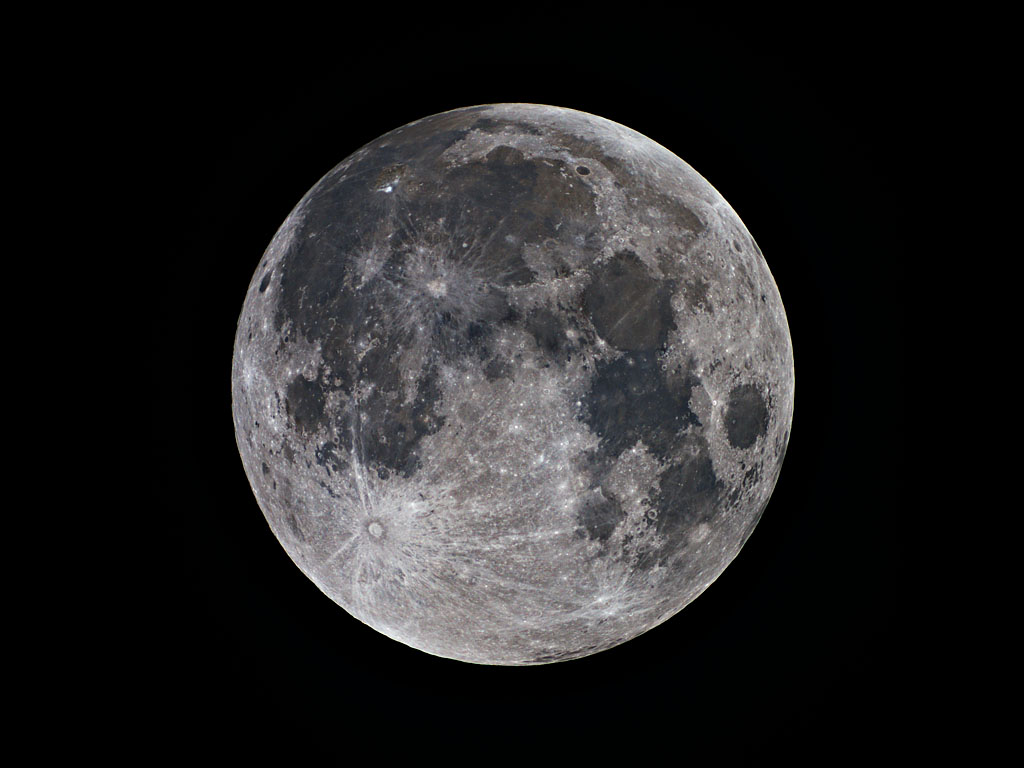You may have heard that tomorrow’s Full Moon will be the largest “Super Moon” since 1948. Wile this is an interesting factoid, and astronomers generally love to get any kind of attention in the press, the case for “Super Moons” is a little over-stated.
The apparent size of the Moon varies over time because the distance between Earth and the Moon varies slightly – from 221,500 miles to 238,900 miles. The way that this distance changes is quite complicated, due to the strong influence of the Sun and the fact that there is not an integral relationship between the orbital periods of Earth and Moon. So while we can predict this distance very accurately, it would appear to the casual observer to have some pretty random aspects.
The apparent size of the Moon varies from 29.95 arcminutes (30 arcminutes is half a degree) to 33.66 arcminutes, or +/- 5.85% from the average size. That’s such a small difference that most people could not detect the difference unless you could see large and small Moons side-by-side.
Furthermore, the definition of a “Super Moon” is when the Moon is exceptionally close at the time of the Full Moon. This is really only significant because it’s difficult to see (or appreciate) the size of the Moon when part of it is in darkness, but it really is there and quite often unusually large even when not full. During a lunar eclipse we can see the Moon quite clearly because NONE of it is illuminated by the Sun. At other times the brightness of the sun-lit portion makes it very difficult to see the dark part.
So get out and take a look at the Moon Monday (Moon day!) night, if you can. But don’t expect to be blown away by it!
